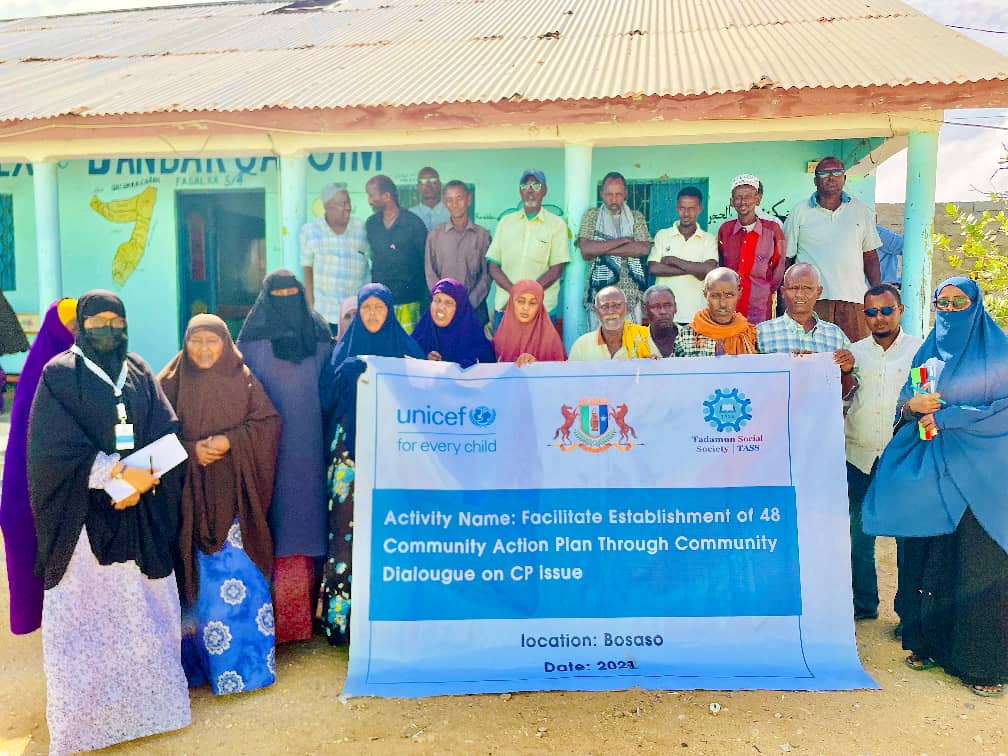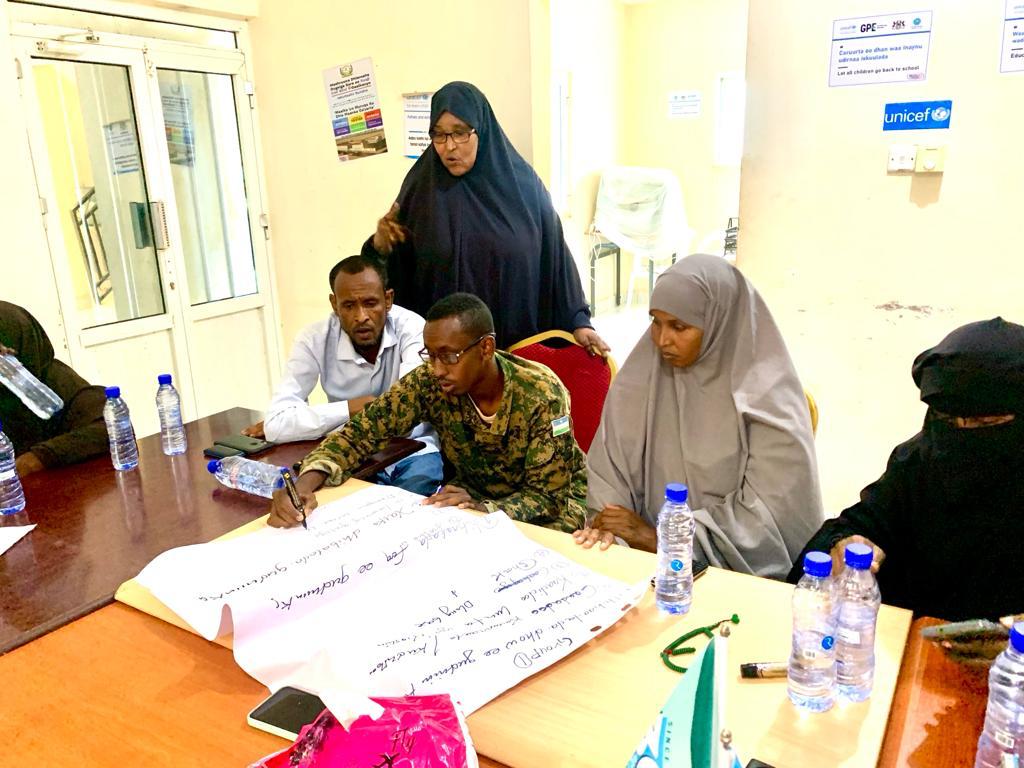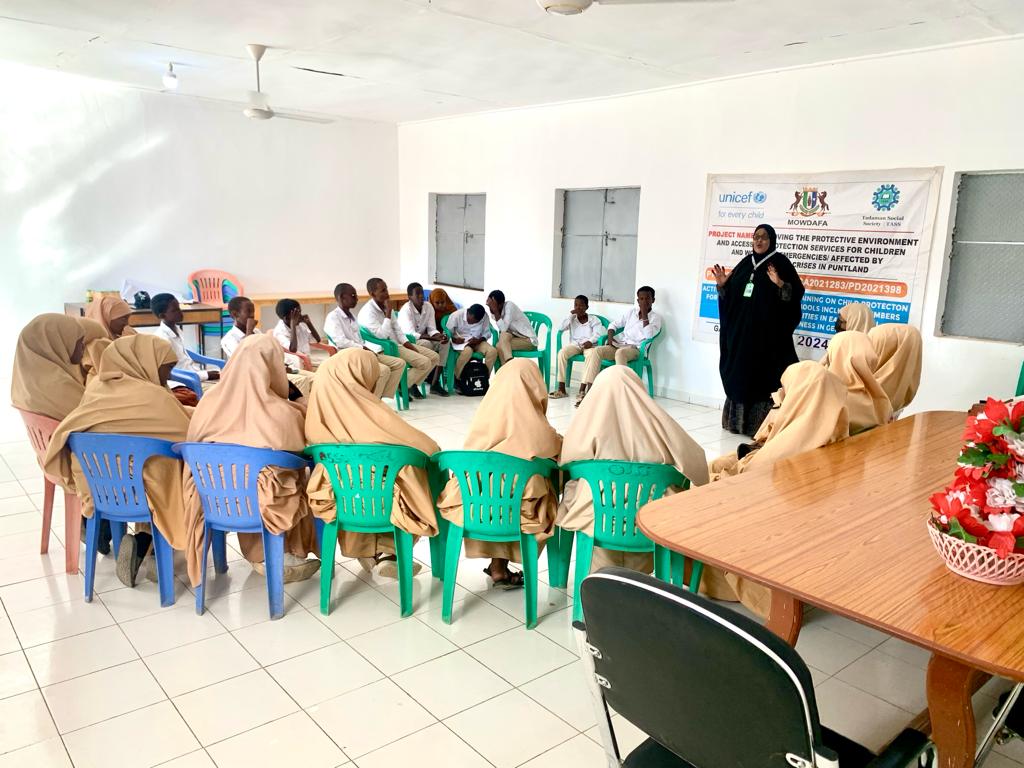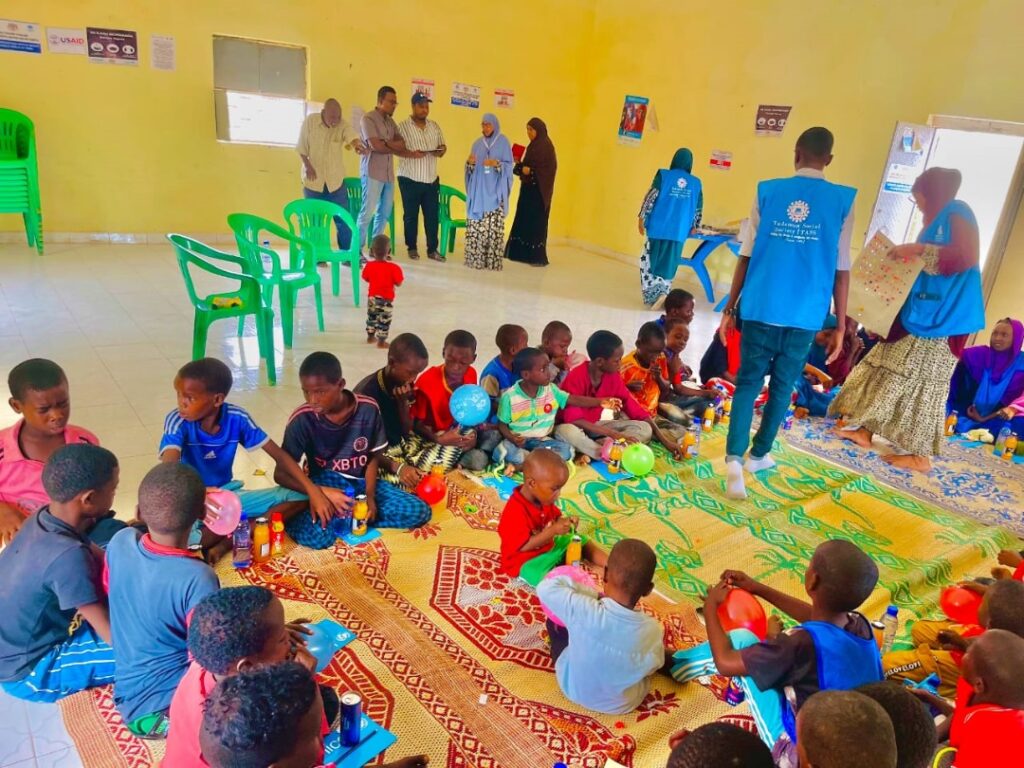TASS Protection Summary Updates in April 2024.
Child Protection and Inclusion
Every child has the right to grow up in a safe and inclusive environment.
Project Title: Improving the protective environment and access to protection services for children and women in emergencies/affected by humanitarian crises in selected districts of Bari, Nugal, Mudug, Sool and Cayn regions of Puntland State in Somalia.
- Community-based structures, with assistance from project staff, facilitated community discussion meetings to address prevention and response to Gender Based Violence (GBV). A total of 1,103 participants (378 women, 274 girls, 237 boys, 214 men) attended these meetings. The discussions empowered participants to take the messages back to their homes, encouraged them to speak up about issues, and helped them understand the various forms of GBV, including psychological, economic, physical, and sexual violence. Additionally, 78 GBV survivors (53 women, 24 girls, 1 boy) were identified by the community-based structures, documented, and referred to service providers who addressed their needs.
- A total of 450 child rights club members were trained on child protection in 18 schools, with a gender distribution of 222 boys and 228 girls. These clubs were trained on topics including child protection, child rights, and mine risk education (MRE), along with referral pathways for accessing services. The clubs then conducted awareness campaigns in all schools, reaching a total of 4,711 students (2,180 boys, 2,081 girls). The initiatives were child-led, utilizing peer-to-peer methods for implementation.
- The project focused on prevention, promotion, and response strategies to tackle mental health issues, while also enhancing protective factors. A total of 701 children, including adolescent girls and those with disabilities (363 boys, 338 girls), were reached. This effort aimed to improve the well-being of participants and provide quality and easily accessible care for both children and their families/caregivers. Additionally, resilience was enhanced using child-friendly spaces, safe houses, and recreational games in project target locations.
- A total of 1,978 community members, consisting of 1,309 women and 669 men, including community child protection committees (CPCs) and focal points at district and village levels, are engaged in ongoing activities aimed at addressing child protection issues within their communities. These activities focus on promoting dialogue sessions on interventions for social norm change to protect children and women from violence, exploitation, and harmful practices, such as sexual exploitation and abuse (SEA). The primary objective is to explore the role of social norms in perpetuating harmful behaviors and contributing to violence against women and girls, as well as identifying and addressing these harmful social norms to prevent negative societal attitudes and promote social norms change.
Summary Achievements
- a strengthened community response to Gender Based Violence (GBV) through increased awareness, empowerment, and support for survivors.
- Built a more informed and aware community of young people, better equipped to recognize, and respond to child protection concerns and advocate for the rights and well-being of children. as the trained club members and students continue to share their knowledge and raise awareness within their schools and beyond.
- improved mental health and well-being of children and the project helped to create a supportive and nurturing environment for the participants, ultimately leading to positive outcomes in their mental health and overall well-being.
- Increased awareness and knowledge among community members on child protection issues and the importance of addressing harmful social norms.
- Improved capacity of community members, including women, men, and community child protection committees, to identify and address child protection issues within their communities.
- Strengthened collaboration and coordination among stakeholders at district and village levels to address child protection issues and promote social norm change.
- Increased reporting and response mechanisms for cases of violence, exploitation, and harmful practices against children and women within the community
- Enhanced protection and support for children and women at risk of or experiencing violence, exploitation, and harmful practices in the community.
- Improved social cohesion and community resilience to prevent and respond to child protection issues and contribute to creating a protective environment for children and women.




